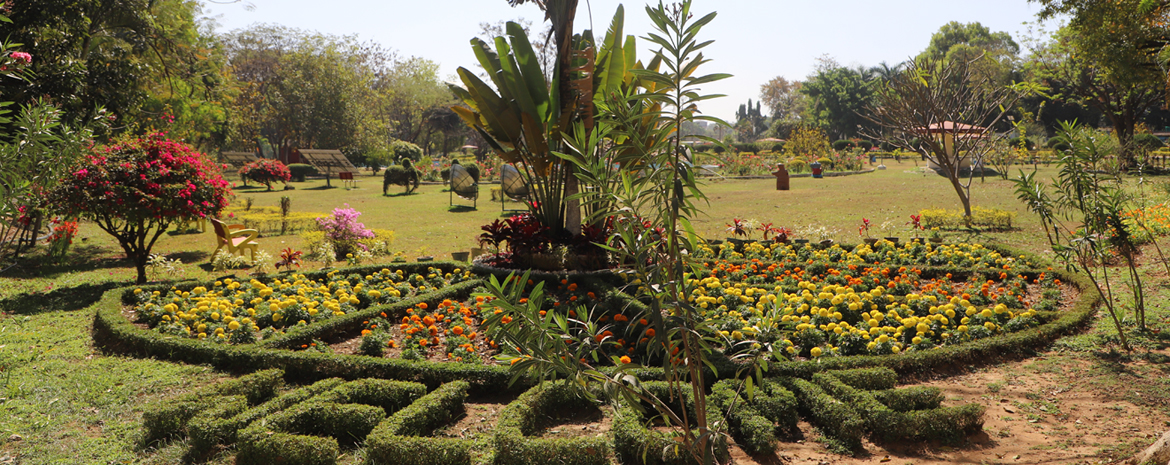Nakshatra Van
Nakshatra Van is a thematic garden based on the interdependent relationship between astronomy, astrophysics, and botany. The foundation stone of Nakshatra Van was laid on 15th November 2002.
This Nakshatra Van is unique in itself. As soon as one enters through the main gate, visitors are welcomed by a replica of a natural mushroom commonly found in the forests of Jharkhand. Apart from the Nakshatra Van, the premises also house the Rashi Van (Zodiac Garden), Navgraha Van (Nine Planets Garden), Medicinal Plant Garden, Musical Fountain, Children's Play Area, Rose Garden, and an artificial waterfall flowing from a man-made hill. The site also includes the Raj Bhavan Lake, also known as Hataniya Lake, which stands witness to the festivals and celebrations of the local residents of Ranchi. The clear, serene waters of the lake naturally attract visitors.
Nakshatra Van is an important site due to its unique features and unparalleled tranquility. The Nakshatra Van was developed over an area of 7.5 acres by the Social Forestry Division, Ranchi, under the Department of Forest, Environment and Climate Change, Government of Jharkhand. The construction was completed on 2nd May 2003. On 26th June 2004, the responsibility of maintenance was handed over to the Jharkhand State Forest Development Corporation. Later, on 25th May 2018, the responsibility was transferred to the Jharkhand Garden Committee (Jharparks).
The land of India has always been a nurturing ground for a human culture deeply rooted in harmony and reverence for nature and life. The love and devotion ingrained in Indian culture have fostered a sense of intimacy and participation with nature in the hearts of its people. Our scriptures provide extensive accounts of the human connection with trees and dependence on forests. Based on profound scientific insight and experience, our ancient sages described certain ecological structures—such as Nakshatra Van (Lunar Mansion Grove), Rashi Van (Zodiac Grove), and Navgraha Van (Nine Planets Grove)—which reflect the interrelationship between human life, celestial bodies, and plants.




